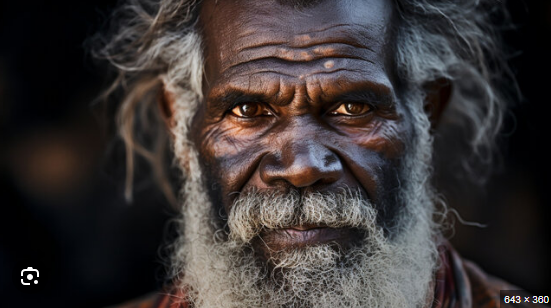Beyond Dispossession
Abstract
"Beyond Dispossession: The Enduring Legacy of
Colonization in Australia" offers a timely and unflinching examination of
a universal theme – the devastating consequences of colonization and the
ongoing struggle for justice by Indigenous peoples. In an increasingly
interconnected world, where awareness of historical inequities and the desire
for balanced narratives are growing, this series will resonate with a global
audience.
The documentary delves beyond the familiar tropes of
victimhood, instead showcasing the remarkable resilience of Indigenous
Australians and their powerful efforts to reclaim their culture, land, and
rightful place in society. This story extends far beyond Australia's borders,
speaking to a globalized audience who grapple with similar legacies of
colonialism and the ongoing pursuit of social justice. "Beyond
Dispossession" promises to spark dialogue, challenge perspectives, and
ultimately foster a deeper understanding of the profound challenges and
triumphs faced by Indigenous communities worldwide.
Documentary Title: Beyond
Dispossession: The Enduring Legacy of Colonization in Australia
Episode Structure
Episode 1: The Shattered Economy
- Opening: Aerial
shots of traditional Aboriginal lands contrasted with modern Australian
cities.
- Historical
Context: Exploration of thriving pre-colonial Indigenous
economies - trade routes, resource management, sustainable practices.
- Dispossession: Impact
of land seizures. Interviews with elders, archival footage showcasing
forced relocations.
- The
Intervention: Modern economic policies aimed at Indigenous
communities – paternalism vs empowerment.
Episode 2: Knowledge Interrupted
- Ancient
Knowledge Systems: Dreamtime stories interwoven with land
management, astronomy, traditional medicine (Interviews with knowledge
keepers).
- Colonial
Education: Mission schools, Stolen Generations, the erasure of
language and cultural transmission.
- Modern
Struggles: Interviews with young Indigenous people navigating the
clash between mainstream education and cultural identity.
- Reclamation: Projects
focused on reviving language and cultural knowledge.
Episode 3: Infrastructure & Displacement
- Traditional
Landscapes: Exploration of the deep connection between Aboriginal
people and their ancestral lands (rock art, sacred sites).
- Forced
Relocation & Reserves: The devastating impact on community
and connection to country.
- Mining
& Development: Modern-day conflicts between resource
extraction and Indigenous land rights. Legal battles and environmental
concerns.
- Urbanization: The
complexities of Indigenous life in cities – access to housing, services,
and cultural survival.
Episode 4: The Human Toll
- Intergenerational
Trauma: The psychological and social impact of colonization –
disconnection, loss of identity, high rates of poverty, and health disparities
- Stolen
Generations: Testimonials of survivors, the ongoing fight for
healing and reparations.
- Frontier
Violence: Historical investigation of massacres and frontier
conflict (may require graphic content warnings).
- Pathways
to Resilience: Programs and initiatives led by Indigenous
communities focused on healing, self-determination, and cultural
revitalization.
Overall Documentary Themes
- Loss
and Survival: Emphasize the devastation inflicted by
colonization, but also the extraordinary resilience of Indigenous
Australians.
- Ongoing
Challenges: Highlight that the effects of colonization are not
confined to history. Underscore contemporary struggles for justice and
rights.
- Indigenous
Voices: Prioritize the perspectives and experiences of Indigenous
Australians. Include a diverse mix of elders, community leaders,
academics, and youth.
Production Considerations
- Visuals: Utilize
a combination of historical footage, interviews, and evocative
cinematography of landscapes.
- Sensitivity: Consult
extensively with Indigenous communities throughout the entire project.
Approach traumatic subjects with care.
- Narrator: An
Indigenous narrator would lend powerful authenticity to the documentary.
recommendations to improve the
provided documentary scenario, along with points explaining the rationale:
Recommendations
- Incorporate
Global Parallels:
- While
focusing on Australia, weave in brief but impactful comparisons to
similar struggles of Indigenous groups worldwide (e.g., Native Americans,
the Sami in Scandinavia). This will reinforce the theme's global
relevance and prevent a feeling of isolation for the audience.
- Intersectionality:
- Explore
how colonization compounds other forms of oppression. Consider segments
on the experiences of Indigenous women, LGBTQ+ individuals, and those
with disabilities. This adds depth and acknowledges the complexity of
lived experiences.
- Solutions-Focused
Episode:
- Dedicate
an episode to successful models of self-governance, economic initiatives,
or cultural revitalization projects led by Indigenous communities. This
instills hope and showcases pathways for positive change.
- Youth
Voices:
- Spotlight
dynamic young Indigenous leaders, artists, and activists. Their energy
and fresh perspectives will resonate with younger audiences and showcase
the future of Indigenous movements.
- Resources
and Action:
- End
the series with concrete suggestions for viewers. Provide links to
organizations supporting Indigenous rights, ways to donate, or even
contact information for relevant policymakers where viewers can express
their desire for change.
Rationale
- Global
Perspective: Broadens the appeal and fosters empathy in a
globalized audience.
- Intersectionality: Adds
nuance, combats overly simplistic narratives, and creates a more inclusive
documentary.
- Solutions: Empowers
viewers and avoids leaving them with just a sense of despair.
- Youth
Empowerment: Attracts a younger demographic and builds vital
intergenerational connection.
- Actionable
Steps: Channelling audience emotion into concrete actions
strengthens the documentary's potential impact.
Additional Considerations:
- Collaborative
Authorship: Partner with Indigenous filmmakers and scholars to
ensure authenticity and diverse viewpoints.
- Accessibility: Offer
subtitles in multiple languages and audio descriptions for wider reach.

Comments
Post a Comment